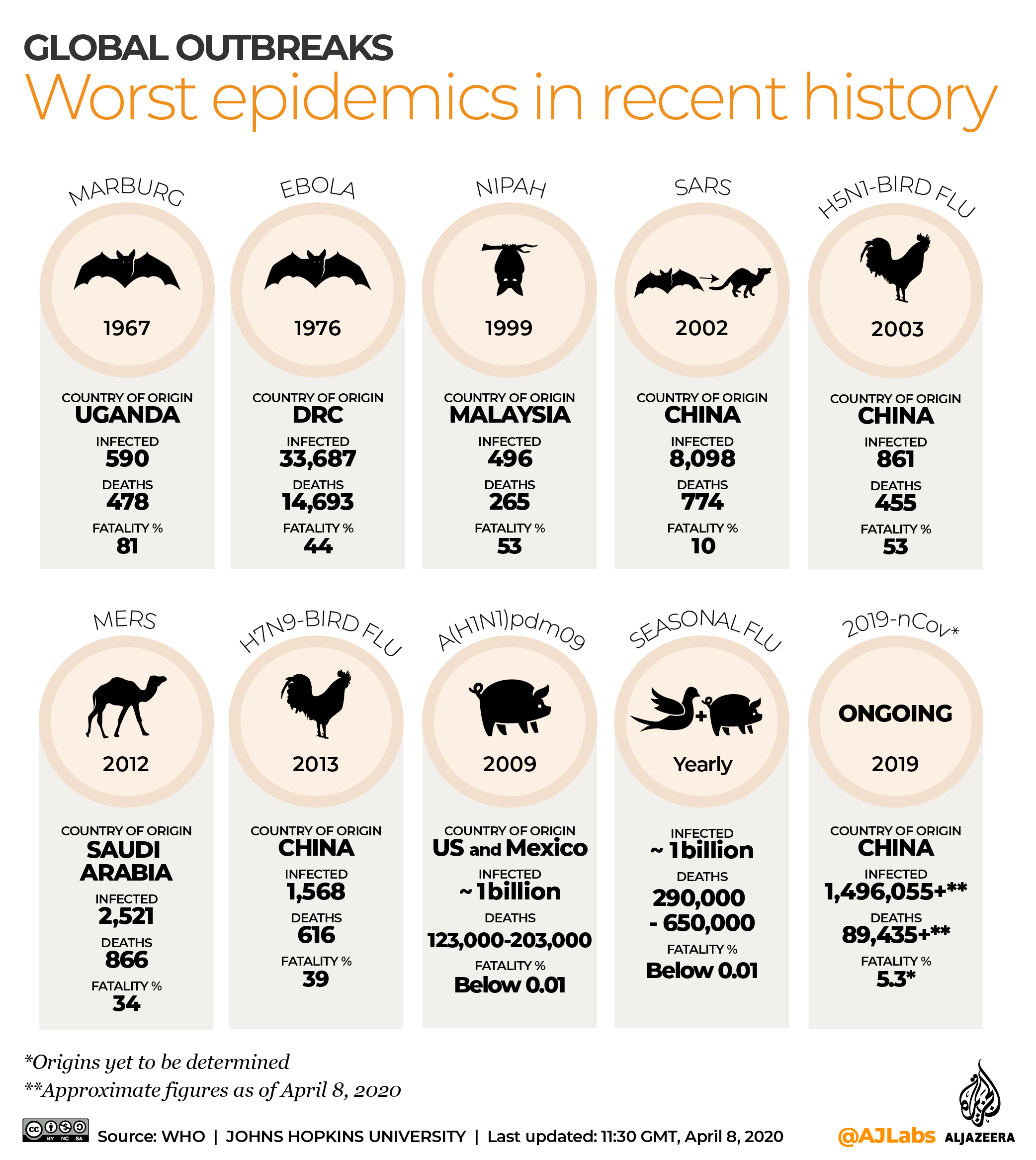‘Human failing’: UN warns of rise in animal-to-human diseases
Experts urge governments to protect environment and curb climate change to prevent future pandemics.

The world is seeing a rise in diseases passed from animals to humans like the coronavirus, the United Nations has warned, calling on governments to take active measures to prevent future pandemics.
In a new report (PDF) released on Monday, the UN Environment Programme (UNEP) and International Livestock Research Institute (ILRI) jointly identified seven trends responsible for such diseases, known as zoonotic.
Keep reading
list of 4 itemsMexico’s teachers seek relief from pandemic-era spike in school robberies
‘A bad chapter’: Tracing the origins of Ecuador’s rise in gang violence
Why is the US economy so resilient?
These include rising demand for animal protein, extraction of natural resources and urbanisation, intensive and unsustainable farming, exploitation of wildlife, increased travel and transportation, food supply changes and climate change.
“The science is clear that if we keep exploiting wildlife and destroying our ecosystems, then we can expect to see a steady stream of these diseases jumping from animals to humans in the years ahead,” UNEP Executive Director Inger Andersen said in a statement.
“We were warned that the current pandemic was not a matter of if but when. And it is a human failing that we predict, but we do not prepare,” she added.
“To prevent future outbreaks, we must become much more deliberate about protecting our natural environment.”
The new coronavirus, which is most likely to have originated in bats, has infected more than 11 million people and killed at least half a million people globally, according to the Johns Hopkins University.

But it is just one in a growing number of diseases – including Ebola, MERS, West Nile fever, Zika, SARS and Rift Valley fever – that have jumped from animal hosts into the human population in recent years, said the report.
About 60 percent of known infectious diseases in humans and 75 percent of all emerging infectious diseases are zoonotic, according to the UNEP, largely due to the increased interaction between humans, animals and the environment.
“While many in the world were surprised by COVID-19, those of us who work on animal disease were not. This was a highly predictable pandemic,” said Delia Randolph, ILRI veterinary epidemiologist and lead author of the report.
Randolph described a “very clear trend” since the 1930s that showed that 75 percent of emerging human diseases stemmed from wildlife.
The report also noted that Africa – home to a large portion of the world’s remaining intact rainforests as well as a fast-growing human population – is at high risk of the increased emergence of zoonotic diseases, but could also provide solutions.
“With their experiences with Ebola and other emerging diseases, African countries are demonstrating proactive ways to manage disease outbreaks,” ILRI Director General Jimmy Smith said.
According to UNEP, about two million people, mostly in developing nations, die from neglected zoonotic diseases every year.
In the last two decades alone, zoonotic diseases have caused economic losses of more than $100bn. This does not include the cost of the COVID-19 pandemic, which is expected to reach $9 trillion over the next few years, said the report.
The experts recommended 10 steps to prevent future outbreaks including incentives for sustainable land use, investing in interdisciplinary approaches, increased monitoring of food systems, developing alternatives for food security and enhancing sustainable coexistence of agriculture and wildlife.